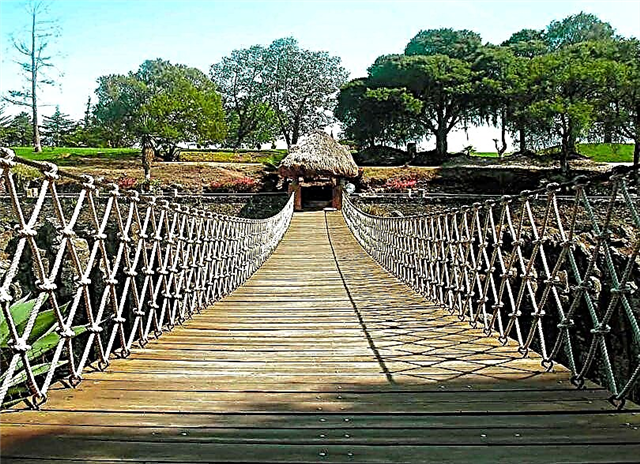
On a spring afternoon thousands of years ago, two outstanding animals were walking in Jalisco lands, one for its size, the gonfoterio; another, because of the shape of its canines, the saber tooth. Both are known thanks to the scientific reconstruction of their fossils, which have allowed us to know their morphology.
Dinosaurs have not been found in Jalisco lands, but such a finding is not ruled out. On the other hand, in this part of the country, characterized by its volcanic soil and having been covered by water for thousands of years, the remains of mammals abound.
The engineer Federico A. Solórzano, who has dedicated his life to the study of fossils, has toured the entity, first as an amateur, then as a student, and later as a researcher and teacher to discover the paleobiota remains of this western area of Mexico. Convinced that knowledge is not used to be kept, but to be shared, the prominent Mexican researcher gave custody of the collected pieces to the capital of Jalisco for study and exhibition. Only a small part of this collection is exhibited at the Guadalajara Museum of Paleontology, as the rest is still being analyzed by specialists and is awaiting an expansion of the site to be shown to the public.
Kinship with the elephant
A decrease in the water level in Lake Chapala revealed, in April 2000, the bones of a huge and surprising animal: a gomphoteric, tropical or subtropical species of mammoth.
The disclosure is important because most of the time one or another bone is located, while on that occasion almost 90% of the skeleton was found. Soon it was removed from the place for review, and after a slow process, the researchers reassembled it and today it occupies one of the main spaces of this museum in Guadalajara. Based on the pieces it is possible to determine that it was a male, whose age was more than 50 years.
This huge animal inhabited North America during the Tertiary and Quaternary periods. It is estimated that it could weigh up to four tons. Its two upper defenses - straight and without enamel band - are mistakenly perceived as fangs; They occur in the maxilla and sometimes in the mandible. The gonfoterium's cranial formation was tall like that of today's elephants. It is known that its life span was very similar to that of humans and could last up to 70 years on average. It was a herbivore that had efficient molars to cut and crush branches, leaves and stems.
Singular feline
In 2006 a new inhabitant came to this museum, a reproduction of the saber tooth tiger. It is known that this large feline was frequent in the habitat of Zacoalco, Jalisco. It actually inhabited the entire continent during the Pleistocene.
The first representatives of the genus date back 2.5 million years and the last existed 10,000 years ago; at the end of the last ice age. Its canine teeth (curved and projected forward) were not used to kill the prey, but to cut it through the abdomen and be able to eat its viscera. The degree of opening of their jaw was 90 and 95 degrees, while that of current cats ranges between 65 and 70 degrees. It weighed about 400 kilograms and due to its size it was slightly smaller than today's lions. With a robust neck, stiff back and small, it had relatively short limbs, so it is considered that it was not suitable for pursuits, but skilled for ambushes.
There were three species of the saber-toothed tiger: Smilodon gracilis, which inhabited regions of the United States; Smilodon populator, in South America, and Smilodon fatalis, which lived in western America. The reproduction that can now be seen in Guadalajara belongs to the latter.
In addition, this museum has other educational attractions such as workshops and guided tours to understand the environment that existed millions of years ago in this part of the country.
Source: Unknown Mexico No. 369 / November 2007.











